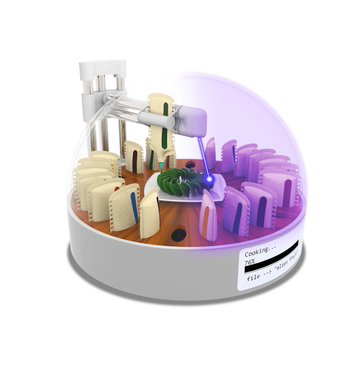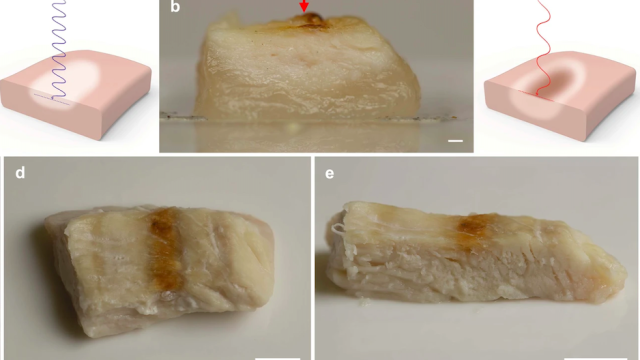If you’re tired of cooking chicken that comes out rubbery or still raw, there may be a new solution for you. A team of researchers at Columbia University recently demonstrated that several different types of lasers can be used to cook 3D-printed chicken thoroughly, with no adverse effects on the food’s taste.
The findings are the latest step in the lab’s progress toward digitising the cooking process. The team cooked chicken right on a tabletop — no need for a conventional oven or stove. Their results were published this month in the journal npj Science of Food.
“Cooking is essential for nutrition, flavour, and texture development in many foods, and we wondered if we could develop a method with lasers to precisely control these attributes,” said Jonathan Blutinger, an engineer at Columbia University and the paper’s lead author, in a university press release.
After blending chicken into a purée and 3D-printing thin layers of it into various shapes, the team exposed the meat to blue, near-infrared, and mid-infrared laser light. The team found that the different types of light cooked the food in different ways: The blue lasers were better for cooking inside the chicken, while the infrared light was best for browning the surface.
The laser-cooked foods were more moist and shrank less than oven-broiled food, the team reported. Two out of two taste testers preferred the laser-cooked meat to conventionally cooked chicken. Beyond that, the lasers could cook food through plastics — meaning that the team could cook food within packaging.

The research came out of Columbia University’s Creative Machines lab, where for years engineers have tinkered with 3D printers as a means of making food. They began with cookie dough and other foods that are “easy to extrude through a nozzle,” as Blutinger put it in a 2017 presentation on the research. Blutinger added in the same presentation that, in the future, consumers could put their biometric data or genome data into such food printers, which could customise meals for them.
More: How Many Slaps Does it Take to Cook a Chicken? This YouTuber Built a Slapping Rig to Find Out
Co-author Hod Lipson, a mechanical engineer at Columbia who leads the Creative Machines lab, said in the same release that the technology is not yet scalable. “We need a high level software that enables people who are not programmers or software developers to design the foods they want. And then we need a place where people can share digital recipes, like we share music,” he said.
Besides the technology and scaling challenges, it may take time for people to get comfortable with a new way of cooking. Some people are in committed relationships with their gas stoves or pressure cookers.
